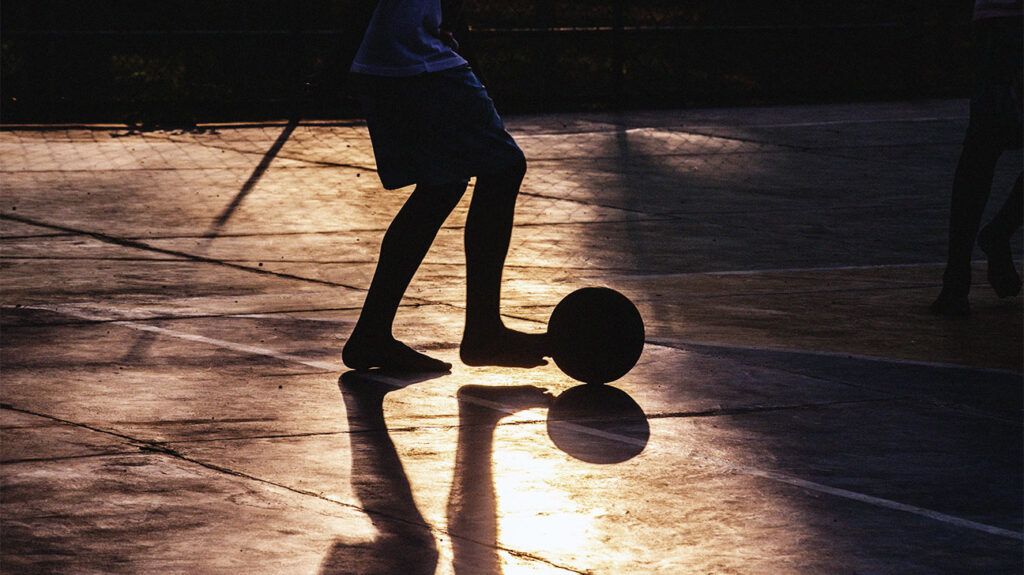Oligoarthritis is a type of chronic arthritis that can affect children and teenagers. It causes joint pain and stiffness in large joints, such as the knees.
Oligoarthritis is the most common type of juvenile idiopathic arthritis (JIA). JIA is the most common type of arthritis affecting children and adolescents. People may also refer to oligoarthritis as oligoarticular juvenile idiopathic arthritis.
This article looks at the symptoms, causes, diagnosis, and treatment of this condition. It also explores the outlook for people with oligoarthritis.

Oligoarthritis commonly affects
People may experience the following symptoms in the affected joint:
- pain or tenderness
- swelling
- redness or discoloration
- difficulty moving or a reduced range of motion
Uveitis
People with oligoarthritis may develop uveitis, which is inflammation inside the eye. Without treatment, uveitis may reduce vision.
Symptoms of uveitis can include:
- light sensitivity
- redness in the eyes
- eye pain
Read more about how arthritis can affect the eyes.
Oligoarthritis and polyarthritis are both types of JIA.
According to the Arthritis Foundation, oligoarthritis affects fewer than five joints — usually larger joints, such as the knees, elbows, or ankles — while polyarthritis affects five joints or more.
These may be small or large joints. It usually affects joints on both sides of the body, such as both knees or wrists. Polyarthritis accounts for around 25% of JIA cases.
Oligoarthritis may develop into polyarthritis if the condition progresses and affects five or more joints.
Learn more about juvenile idiopathic arthritis.
Oligoarthritis is idiopathic, which means there is no known cause. People may develop types of JIA due to a trigger, such as bacteria or a virus, which activates genes that cause JIA.
Oligoarthritis is an autoimmune condition. With these illnesses, the immune system mistakenly attacks healthy tissue.
In oligoarthritis, this immune reaction causes inflammation of the synovium, the soft tissue lining the joints, leading to pain and reduced movement.
According to a
Possible risk factors for JIA
- viral or bacterial infections, which may trigger JIA
- exposure to antibiotics in early childhood
- cesarean section delivery
These factors require further research to fully understand how they may be potential risks or triggers for JIA and oligoarthritis.
People with a family history of chronic arthritis may have a slightly
A doctor may suspect JIA if a person is under 16 and has unexplained joint pain, swelling, or stiffness for
Doctors may carry out the following to help them rule out other conditions:
- symptom assessment and a medical history, including family history
- physical examination of the joints, skin, movement, eyes, lymph nodes, and abdomen
- blood tests to check for the presence of certain antibodies or markers which indicate inflammation
- a complete blood count, which checks for low levels of red blood cells
- liver and kidney function tests
- imaging tests, such as X-ray, ultrasound, or MRI scans, to assess inflammation, bone structure, and any joint damage
These tests can help a doctor diagnose JIA, identify which subtype people have, and decide on the best course of treatment.
What are chronic, persistent, and extended oligoarthritis?
Doctors use the following criteria to define oligoarthritis further:
- Chronic oligoarthritis: This arthritis affects four joints or fewer in the first
6 months of the condition. - Persistent oligoarthritis: This is when there are four or fewer affected joints after the initial 6 months.
- Extended oligoarthritis: People have extended oligoarthritis if there are more than four affected joints after the initial 6 months.
For all types of JIA, doctors
Other treatments for oligoarthritis may include:
- disease-modifying antirheumatic drugs (DMARDs), such as methotrexate, which prevent the immune system from attacking the joints
- biologics to interrupt the inflammatory process
- physical therapy to help improve movement, balance, and coordination
- strengthening and flexibility exercises
- assistive devices, such as braces or splints
- low impact exercise, such as swimming, cycling, walking, and yoga
- nutritional support
- surgery, which may replace parts of a damaged joint or remove cartilage to improve joint function
See how DMARDs and biologics compare.
Advances in treatments
Getting an early diagnosis and prompt treatment for oligoarthritis is important in preventing long-term joint damage and helping maintain joint function.
Early treatment may help improve a person’s outlook and result in higher remission rates.
JIA may cause differences in leg length and joint contractures. It
Uveitis is a potential complication of oligoarthritis and can cause severe permanent damage, leading to visual impairment or blindness.
Factors that can worsen the outlook for eye-related issues of oligoarthritis include:
- the presence of antinuclear antibodies
- being younger than 6 years old
- being female
Appropriate management of the condition and related inflammation can help prevent complications and damage to the body from oligoarthritis.
Oligoarthritis is a type of JIA that causes joint pain, stiffness, and swelling in children and teenagers. Oligoarthritis affects fewer than five joints and occurs in large joints, such as the knees.
Prompt treatment of oligoarthritis is important in preventing joint damage or complications. Treatment may include medications, physical therapy, and, in some cases, surgery.
